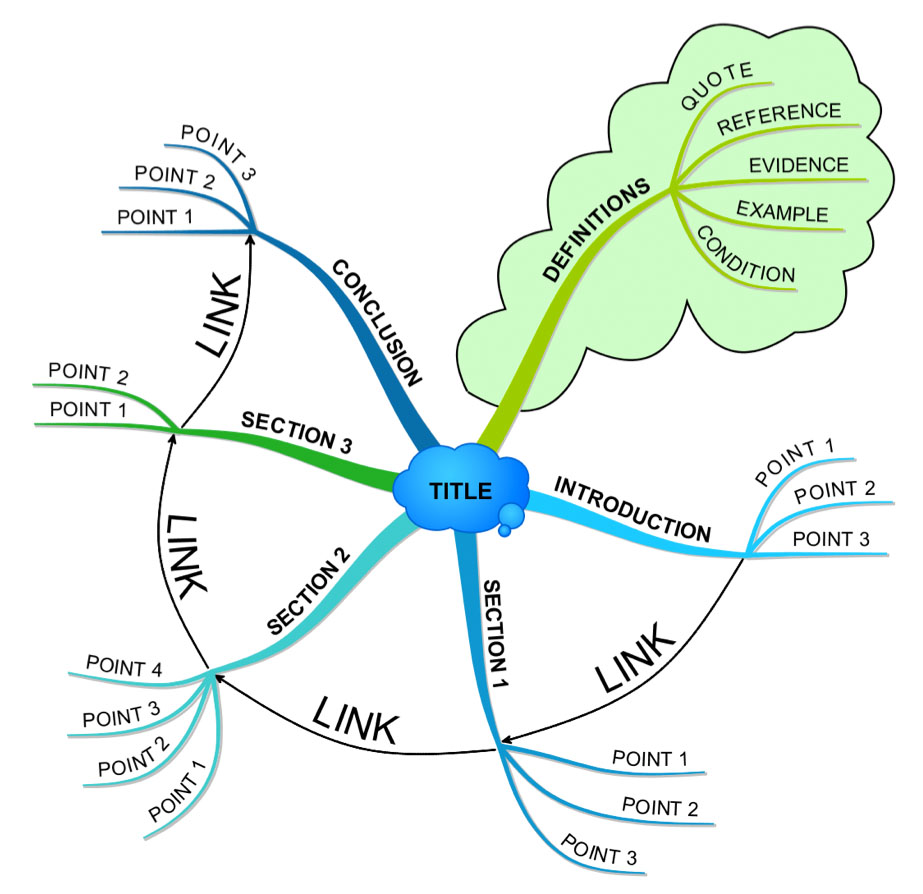MINDMAPS
If you've got an essay-style exam, creating a brief MindMap, before you launch into the essay writing itself, is a really good way to structure your thoughts. However, it’s very important that you keep it simple and brief.
And if you're not sure where to start your essay, brainstorming or your ideas onto a MindMap is great because the structure is created for you, as you go.
It's worth spending a little time up front, organising your thoughts like this, because then you can just concentrate on delivering them coherently as you write your essay, instead of trying to do everything at once and potentially getting all the way to the end before realising you’ve left something out.
Having said that, you don't want to spend so long doing the MindMap that you don’t allow enough time to write the essay itself. Getting the balance right is essential.
- Read the exam question carefully.
- Put the title of your essay in the centre of your MindMap.
- Create major branches for each main section of the essay.
- You also need an introduction branch and a conclusion branch.
- Then from each of these major branches you’ll need smaller branches for the different points you intend to put in each of the main sections.
- Think about any definitions, quotes, references etc you’ll be using as evidence to back up your argument and put them on a separate branch.
Setting it out so simply and so clearly like this means that as you write your essay you can cross reference backwards and forwards, the points that you've made (eg your definitions and examples) because they're so easy to see in front of you on your MindMap.
Make sure as you draw your MindMap and before you start writing your essay, that you are answering the question.
Think about what the examiner needs to hear from you.

